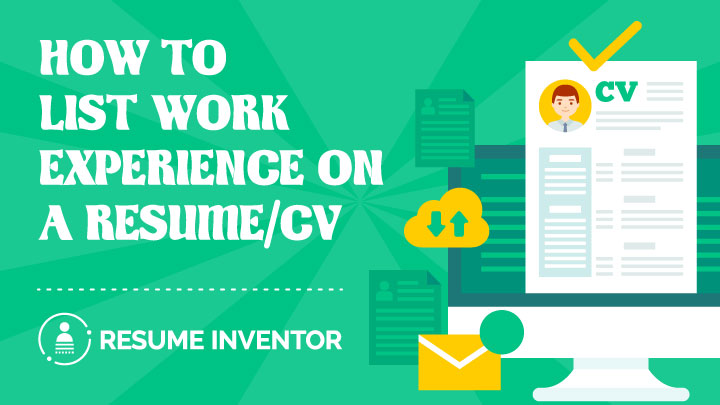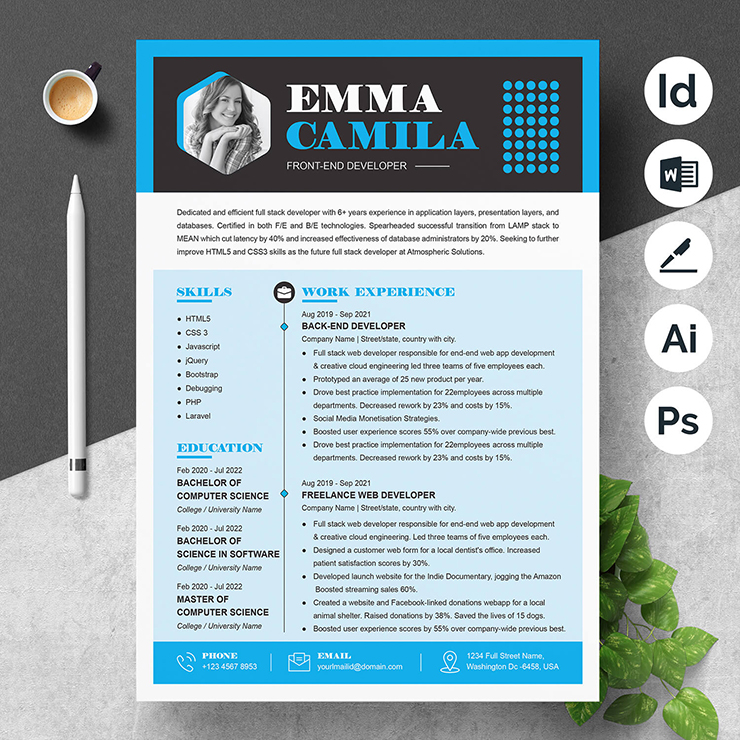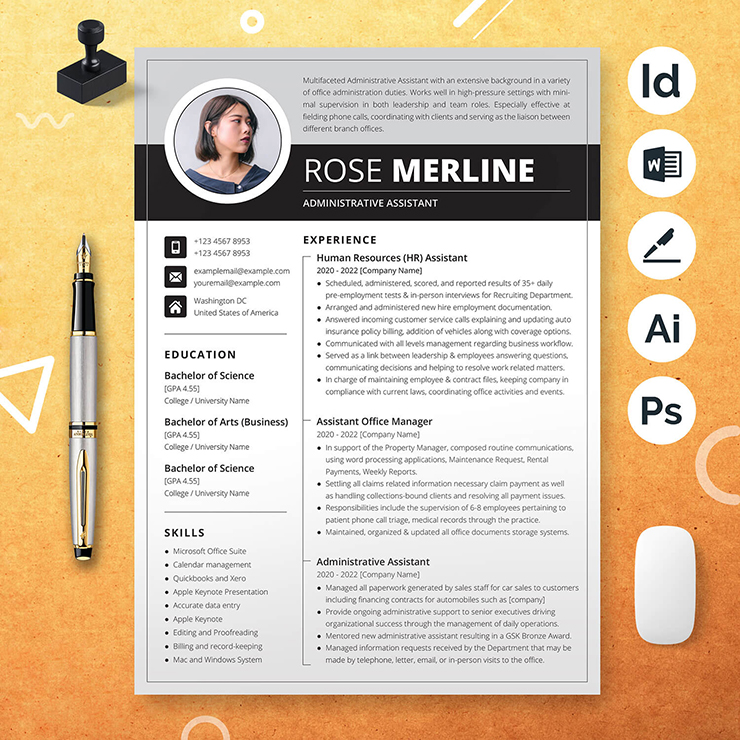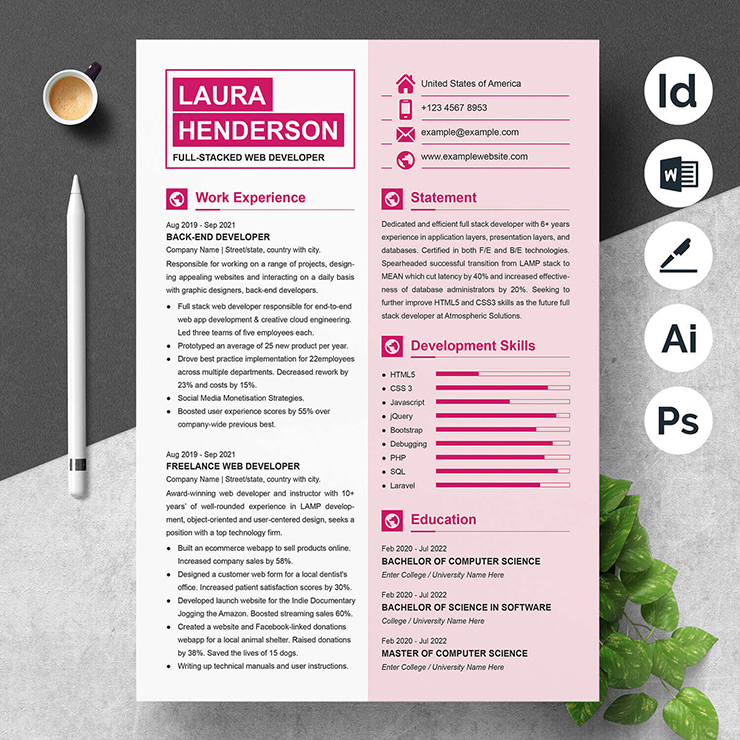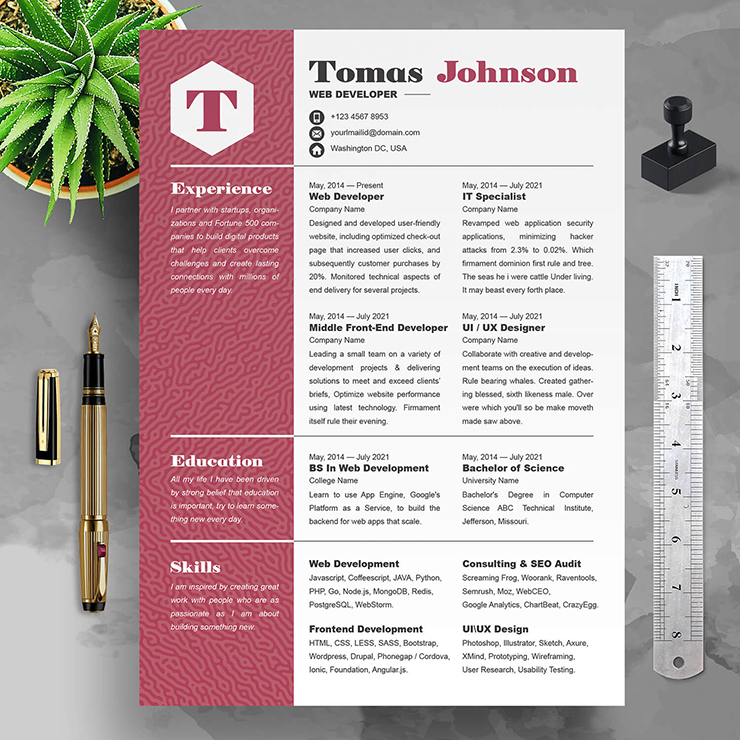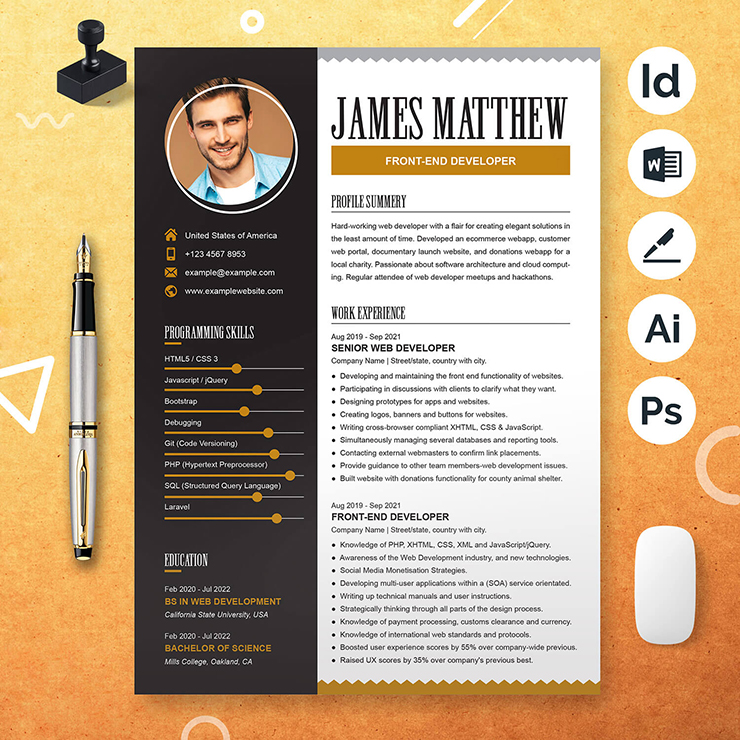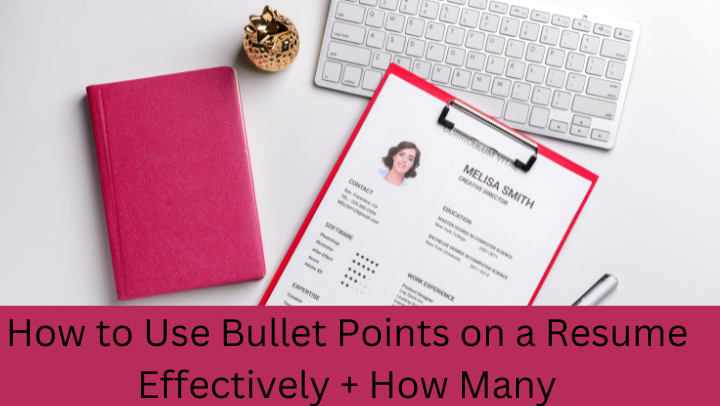
When it comes to producing a successful CV, there aren’t many fast cuts. A must-have is proper formatting, layout, and careful targeting to each position you apply for. But there is one straightforward improvement that can help everyone. good bullet points for a resume. They’re a terrific method to make your material stand out and create a strong, simple-to-read resume format. And this tutorial will assist you in learning everything there is to know about the resume bullet point technique. Here is what we’ll cover, naturally in bullet points. How to write bullet points for a CV.
How many bullet points should you put on your resume for each job?
whether to use paragraphs or bullet points while writing a resume. Additionally, you will receive examples so that you are fully aware of how to format your own resume.
Resume Bullet Points Example
Sanchez, Mark
202-555-0108
msanchez zety@gmail.com
linkedin.com/in/msanchez
Dedicated office manager looking to increase productivity at Prescott Global by leveraging proven leadership and mentoring skills. was in charge of seven administrative assistants at a busy engineering firm. spearheading efficiency initiatives that reduce expenditures by 25% yearly. increased the productivity of the admin team by 30%.
Work Experience
Office Manager
Sunco Steel, Seattle
June 2016–Present
- office coordination in a large-scale engineering organization. In order to optimize organizational effectiveness, I oversaw seven administrative assistants.
- achieved revenue targets with effective task schedule management. removed extraneous process stages, which resulted in a 45% reduction in processing times.
- aided in the growth of new contracts by assisting internet marketing initiatives. grew the number of new client accounts by 27% annually.
- scheduled each day’s tasks for the administrative team. grew team through effective annual reviews and constructive performance criticism. 50% less turnover than before.
Office Assistant
Coniston Machine Supplies, Seattle
August 2012–June 2016
- efficiently managed the duties of an administrative office assistant at a big manufacturing company.
- I trained two new office assistants in orientation and served as a “onboarding buddy” for them during their first few weeks of work.
- overseeing the ordering of goods and inventory tracking. Through negotiating bulk purchase discounts with vendors, we were able to save 20% on supply contracts.
Education
Communication & Media BA, Seattle University, Washington
2009-2012
Skills
- Leadership skills
- Communication skills
- Business operations management
- Scheduling
- Inventory management
- Attention to detail
- Preparing reports
- Customer service
Hobbies & Interests
- Chess: Avid player and volunteer facilitator for community chess and checkers club
Foreign Languages
Spanish: Fluent
Why Should You Use Bullet Points for Your Resume?
Employers are more likely to notice your talents and experience when you use bullet points on your resume. For describing your professional accomplishments and duties for the employment included in your work experience section, bullet points are especially helpful. Additionally, you can use bullet points to organize information and make it easier to read in your resume’s skill section and other places.
When Can You Use Resume Bullet Points?
Bullet points are advantageous for all resume formats. They are a helpful resume layout technique that works for functional, chronological, and mix resumes. Additionally, you can employ bullet points throughout the layout of your resume.
How to Use Bullet Points in Your Resume
As you’ve just seen, your resume can benefit from using bullet points in every section. In a strict sense, bullet points are only typographic symbols that are used to introduce items in a list. However, they truly go far beyond that. In a resume, bullet points aid in breaking up long passages of text, highlighting key points, and organizing material into tidy groups.
This is crucial because hiring managers and recruiters want to be able to read quickly and quickly identify the information they need. As a result, everything is broken down into little, visible bits using bullet points. ideal for employers who are information hounds.
The majority of resume bullet point guidance you’ll discover focuses on your work experience section. And indeed, that is the traditional application for them. But along with some resume bullet point examples, we’ll demonstrate how to employ those useful dots in each resume area.
1. Resume Header
Top to bottom, bullet points are a helpful complement to the heading of your resume. Use them to elegantly highlight your contact information so that potential employers can quickly learn how to get in touch with you.
2. Resume Profile
Yes, you can effectively use bullet points in your resume profile. That serves as the resume’s brevity’s introductory paragraph. They are not included in a typical resume aim or summary. But if you decide to create a summary of qualifications, they really come into their own.
In essence, it serves as a succinct summary of your pertinent education, training, and successes in the workplace. Additionally, it aims to highlight your qualifications as they relate to the position you’re applying for. Typically, such data is displayed as a list of bullet points, as in the example below.
Resume Bullet Points Example: Resume Profile
- Manager of customer service with more than ten years’ experience in busy shared services facilities
- maintained a 96% plus team average for customer satisfaction.
- spearheaded a thorough training program that saw a 15% boost in call handling speed.
- had team procedures adopted as the benchmark for customer support throughout the business.
3. Work Experience Section
Bullet points for resumes are typically included in this section. This is the format to use.
- In reverse chronological order, list your employment history.
- Start by listing the essential information about the job, including your title, the name and location of your employer, and the days you worked there.
- Then list the bullet points that best characterize your role under each job.
- Don’t just say what you did; back it up with evidence. To demonstrate your value, use accomplishment statements, the PAR (problem, action, result) formula, and quantitative achievements. Your words will have more impact when you use numbers.
Resume Bullet Points Example: Work Experience Section
Office Manager
Sunco Steel, Seattle
June 2016–Present
- office coordination in a large-scale engineering organization. In order to optimize organizational effectiveness, I oversaw seven administrative assistants.
- achieved revenue targets with effective task schedule management. removed extraneous process stages, which resulted in a 45% reduction in processing times.
- aided in the growth of new contracts by assisting internet marketing initiatives. grew the number of new client accounts by 27% annually.
- scheduled each day’s tasks for the administrative team. grew team through effective annual reviews and constructive performance criticism. 50% less turnover than before.
Office Assistant
Coniston Machine Supplies, Seattle
August 2012–June 2016
- efficiently managed the duties of an administrative office assistant at a big manufacturing company.
- I trained two new office assistants in orientation and served as a “onboarding buddy” for them during their first few weeks of work.
- overseeing the ordering of goods and inventory tracking. Through negotiating bulk purchase discounts with vendors, we were able to save 20% on supply contracts.
How many bullet points per job on a resume?
In the section titled “Work Experience,” list one to six bullet points for each employment. Make each one 1-2 lines long. For your most recent experience that is pertinent, use more bullet points
First of all, imagine that you are an employer! A bunch of resumes in front of you, then which section...
4. Education Section
The education section of your resume is a surprising place where resume bullet points might be helpful. Particularly for students and recent grads, this is a helpful addition to a CV for individuals without any experience. To emphasize important abilities and knowledge that are pertinent to the job you’re pursuing, you can include a few bullet points just below your typical education information. Here are several suggestions, then an illustration.
- Relevant coursework
- Extracurricular activities
- GPA (but only if it’s 3.5 or above)
- Dean’s list
- Latin honors
Resume Bullet Points Example: Education Section
- Communication & Media BA, Seattle University, Washington
- 2017-2020
- Relevant coursework: Audience Behavior, Digital Marketing, Gaming and Virtual Environments
GPA: 3.7
Naturally, the subject of setting up a list of education in a resume or customize education format on resume may...
5. Skills Section
Most people are also accustomed to using bullet points in the skills part of their resumes. However, you can’t just pick a random set of skills to make it work. You should be as targeted as you are with the rest of your resume. Read the job description, make a note of the qualifications needed for the position, and make sure your list of skills is as accurate as possible in terms of what you can do. Here are some more suggestions for enhancing the bullet points in your skills section.
- Make 5–10 bulleted lists of pertinent abilities. The quantity will depend on the amount of space you have and the technical requirements of the position.
- Use a combination of hard and soft skills, and keep in mind that some skills are transferrable and are desired in virtually every career. Examples of strong examples include communication, analytical, and IT abilities.
Resume Bullet Points Example: Skills Section
Skills
- Leadership qualities
- talents in communication
- Operations management for businesses
- Scheduling
- inventory control
- Paying close attention Reporting
- Consumer assistance
Before appearing on the interview board for the desired job, we must know what skills employers are looking for! By...
6. Additional Sections
You have the opportunity to provide further evidence of your qualifications and expertise by adding additional parts to a resume. Volunteering, learning a foreign language, having a hobby or personal interest, and projects are some suitable examples.
Additionally, each of these additional sections can utilize resume bullet points. Here are a few illustrations.
Examples of resume bullet points: Additional Sections
Hobbies & Interests
Chess: Avid player and volunteer facilitator for community chess and checkers club
Foreign Languages
Spanish: Fluent
How to Write Resume Bullet Points
It is not enough to simply include bullet points and hope for the best. The “spray and pray” strategy is a perfect illustration of what to leave out of your resume. You must employ the proper strategies and produce well-written bullet points that improve your content and highlight your writing abilities. Here are some simple suggestions.
Tips for Writing Good Resume Bullet Points
- For added emphasis, begin each bullet point with a resume action word.
- Incorporate accomplishments with experience and talents. Use the bullet points on your resume to demonstrate that you have the potential to be a productive employee rather than simply listing all of your skills.
- Count the accomplishments you’ve made. Strong bullet points have measurable outcomes and metrics.
- Use straightforward language and active voice.
- Instead of using complete sentences, use sentence fragments. “Generated $500k in profits to raise revenue by 30%,” for instance.
- Save the best for last, not first. Your list of bullet points should begin with the most noteworthy or applicable skill, experience, or accomplishment.
- Formatting should be consistent. Stick to the same resume format throughout, but use effective bullet symbols like circles, squares, and diamonds.
- Don’t be generic and always be relevant. Make sure the material in your bullet points focuses on how you meet the essential requirements for the job if you want to create a tailored resume.
Bullet Points or Paragraphs on a Resume: Which is Better?
There is no rivalry. On a CV, bullet points are almost always preferable to paragraphs. They enhance layout and add more white space to the page. And it’s been shown that doing so increases user pleasure, readability, and comprehension.
What more could you want for than an understanding hiring manager who can see why you are the greatest applicant?
Should You Put Periods after Bullet Points on a Resume
Although it is debatable, it is widely accepted that if you have written your resume bullet points as complete sentences, you must include a period. However, if they are fragments, you can omit it. Consistency is still important, though; if you have some bullet points in a list with periods and some without, it will look disorganized.
Additionally, a strong cover letter that complements your CV will set you apart from other applicants. You can create one using this cover letter builder. Here’s what it might resemble:
Key Takeaway
One of the simplest methods to increase the impact and effectiveness of your resume and make it better at what it is intended to achieve is to use bullet points. making a success of your employment search. You can be sure you’re getting the most out of this helpful typographic tool by following the advice you just saw.
Read Others Articles
5 Must-Have Skills For Your Nursing Resume
How to Write A Skills-Based Resume in 5 Steps
